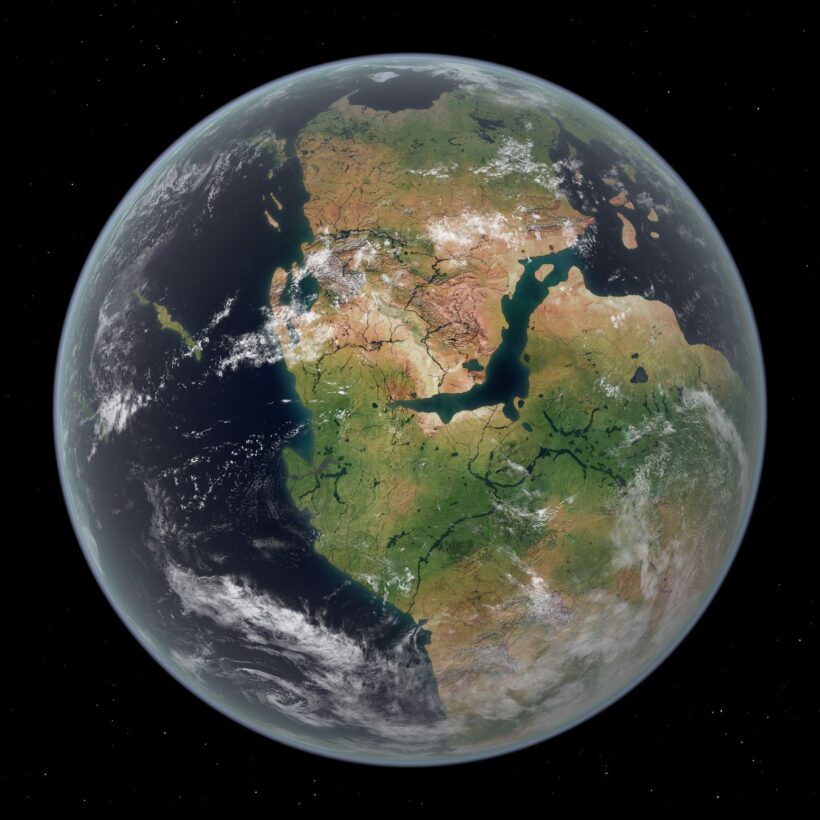Pangea (substitute spelling: Pangea) was a landmass that existed on Earth for a long period of time back, covering about 33% of its surface. A supercontinent is an immense body of land comprising numerous mainlands. On account of Pangea, practically Earth’s landmasses were all associated with a solitary landform. A great many people accept that Pangea developed a long time back, was totally shaped around quite a while back, and split off around quite a while back.
The name Pangea comes from an old Greek word signifying “all land.” The term was first utilized in the mid-twentieth century when Alfred Wegener saw that Earth’s mainlands appeared to fit together like a riddle. He later fostered the hypothesis of mainland float to make sense of the shape and position of landmasses and begat the title Pangea in a 1927 discussion regarding the matter.
Read more about the various topics here
Making Of Pangea
Pangea was shaped forever and a day of landform development and development. Mantle convection inside the Earth’s surface a large number of years prior made new material continually rise to the top in fracture zones between Earth’s structural plates. As new material arose, these masses or mainlands got away from the break. The landmasses, at last, pushed toward one another to converge into a solitary mainland, and hence Pangea was conceived.
Be that as it may, how did these land mafia really reach out? The response is through a great deal of relocation and conflict. Around a long time back, the northwestern piece of the old mainland of Gondwana (close to the South Pole) slammed into the southern piece of the Euramerican landmass to frame a huge landmass. After some time, the Angaran mainland (close to the North Pole) started to move south and converged with the northern piece of the developing Euramerican landmass, shaping the supercontinent that came to be known as Pangea. This interaction finished around a long time back.
Read more about the Factors of 9
Aside from Pangea, there was just a single area left, Cathesia, and it was comprised of North and South China. It never turned out to be essential for the supercontinent. Once full-fledged, Pangea covered about 33% of Earth’s surface and the rest was the sea (and Cathesia). This sea was altogether called Panthalassa.
Division Of Pangea
Pangea started to separate a long time back similarly it was shaped: through structural plate development because of mantle convection. Similarly, as Pangea shaped through the development of new material away from the break zones, so did the new material destroy the supercontinent. Researchers accept that the fracture that split Pangea started due to a place of shortcoming on the Earth’s outside. In that frail zone, magma surfaced and made a volcanic crack zone. At last, this fracture zone turned out to be enormous to such an extent that it framed a bowl and Pangea started to fall to pieces.
Formation Of Ocean
Separate seas were framed when Panthalassa involved recently opened areas of the expanse of land. The primary sea to be shaped was the Atlantic. Quite a while back, a part of the Atlantic Ocean tore open between North America and northwestern Africa. Quite a while back, the South Atlantic Ocean was framed when present South America split away from the west bank of southern Africa.
Quite a while back, North America and Europe, Australia and Antarctica, and India and Madagascar went with the same pattern and split up. North of millions of additional years, the landmasses moved to their estimated current position.
For a chart of Pangea and the way of its partition, visit the United States Geological Survey’s Historical Perspectives page inside this moving Earth.
More Supercontinents
In view of proof uncovered through the investigation of plate tectonics, almost certainly, Pangea was by all accounts not the only supercontinent to exist. Truth be told, archeological information found through matching stone sorts and the disclosure of fossils recommend that the development and obliteration of a supercontinent, for example, Pangea presumably happened more than once over the entire course of time. Gondwana and Rodinia are two supercontinents whose presence is logically upheld that most likely existed before Pangea.
Researchers anticipate that supercontinents will keep on showing up. Today, the mainlands of the world are gradually moving from the Mid-Atlantic Ridge to the center of the Pacific Ocean. It is believed that they will ultimately crash into one another in around 80 million years.






